Name Hector Lavoe | Years active 1968–1993 Occupation(s) Singer-Songwriter Role Singer | |
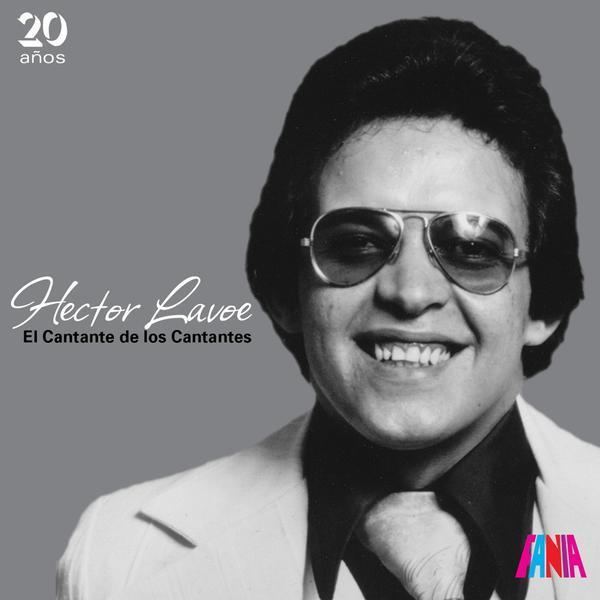 | ||
Birth name Hector Juan Perez Martinez Born September 30, 1946 Ponce, Puerto Rico ( 1946-09-30 ) Spouse Nilda Roman Perez (m. ?–1993) Children Jose Alberto Perez, Leslie Perez, Hector Perez, Jr. Similar People Died 29 June 1993 (aged 46) Manhattan, New York, United States | ||
Fania salsa 2 hard songs hector lavoe
Héctor Juan Pérez Martínez (September 30, 1946 – June 29, 1993), better known as Héctor Lavoe, was a Puerto Rican salsa singer.
Contents
- Fania salsa 2 hard songs hector lavoe
- Tiempo pa matar willie col n
- Early life
- Arrival in New York City
- The Willie Coln years
- Lavoe goes solo
- Last years and death
- Recognition
- Studio albums
- Other albums
- Filmography
- Songs
- References
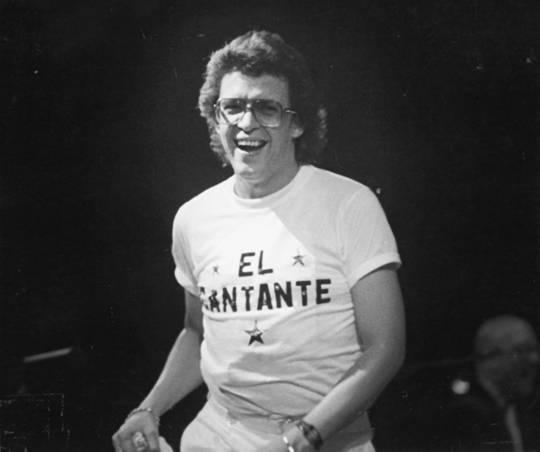
Lavoe was born and raised in the Machuelo Abajo barrio of Ponce, Puerto Rico. Early in his life, he attended the Ponce Free School of Music known today as the Instituto de Música Juan Morel Campos, and, inspired by Jesús Sánchez Erazo, developed an interest in music. He moved to New York City on 3 May 1963, at the age of sixteen. Shortly after his arrival, he worked as the singer in a sextet formed by Roberto García. During this period, he performed with several other groups, including Orquesta New York, Kako All-Stars, and the Johnny Pacheco band.
In 1967, Lavoe joined Willie Colón's band as its vocalist, recording several hit songs, including "El Malo" and "Canto a Borinquen". Lavoe moved on to become a soloist and formed his own band performing as lead vocalist. As a soloist, Lavoe recorded several hits including: "El cantante" composed by Rubén Blades, "Bandolera" composed by Colón, and "Periódico de ayer" composed by Tite Curet Alonso. During this period he was frequently featured as a guest singer with the Fania All Stars recording numerous tracks with the band.
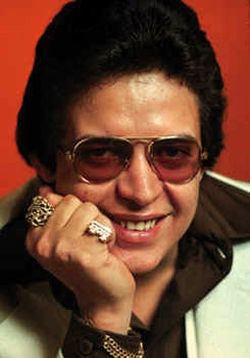
In 1979, Lavoe became deeply depressed and sought the help of a high priest of the Santería faith to treat to his drug addiction. After a short rehabilitation, he relapsed following the deaths of his father, son, and mother-in-law. These events, along with being diagnosed with HIV, drove Lavoe to attempt suicide by jumping off a hotel room balcony. He survived the attempt and recorded an album before his health began failing. Lavoe died on June 29, 1993, from a complication of AIDS.
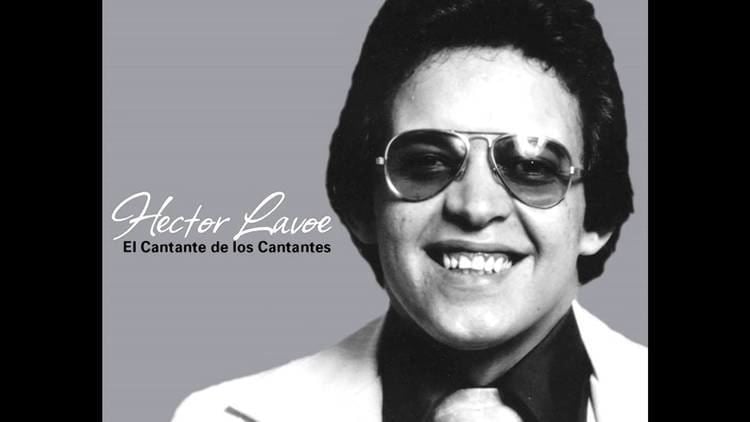
Tiempo pa matar willie col n
Early life
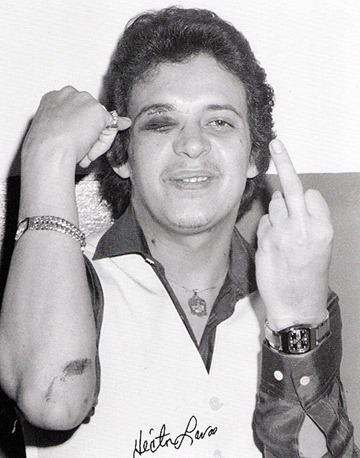
Héctor was born in Ponce, Puerto Rico, to Francisca (Pachita) Martínez and Luis Pérez, and raised in the Machuelo Abajo barrio of the city. He was inspired early in life by his musically talented family. His grandfather, Don Juan Martínez, was a singer of controversial songs, which led to physical confrontations. His uncle was well known in Ponce as a tres player. His mother Francisca, also known as Pachita, was well known by her family and townspeople for her beautiful singing voice. His father, Luis, supported his wife and eight children by singing and playing guitar with trios and big bands. He was in high demand as a guitarist for the Fiestas de Cruz celebrations and other popular religious ceremonies, and he wanted his son to receive formal musical training as a trombonist; Héctor dreamt of being a singer. Héctor was influenced by Puerto Rican singers such as Jesús Sánchez Erazo, also known as "Chuíto el de Bayamón" - one of the island's most successful folk singers, and Daniel Santos. Later in his life, he would record songs with both artists.
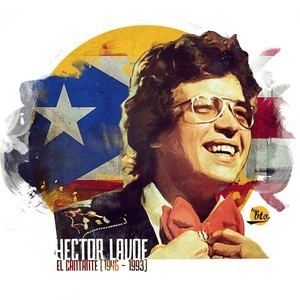
Héctor attended the local Juan Morel Campos Public School of Music where the first instrument he learned to play was the saxophone. His classmates included José Febles and multi-instrumentalist Papo Lucca. One of his teachers was very strict and demanded that he practice good diction and manners, and have a strong stage presence. He felt Héctor would become a superstar as a bolero singer. From the start Héctor was a star with exceptional charisma, talent, and charm. One of a kind, his unique voice, refined and with impeccable diction, demanded attention. Well on his way to becoming a popular-music vocalist, he began frequenting clubs such as Segovia, where he sang accompanied by his childhood friends, Roberto García and José Febles. At age 17, Lavoe abandoned school and sang with a ten-piece band. He moved permanently to New York on May 3, 1963, against his father's wishes, as an older brother had moved there and later died of a drug overdose. It would take many years before Héctor was able to reconcile with his father.
Arrival in New York City
Upon arriving in New York he was met by his sister Priscilla. The first thing he did was visit El Barrio, New York's "Spanish Harlem." Héctor was disappointed by the condition of El Barrio which he had envisioned would have "fancy Cadillacs, tall marble skyscrapers and tree-lined streets." Hector tried to earn a living as a painter, messenger, porter and concierge.
One day he reconnected with his friend Roberto García. They began to frequent Latin music and dance clubs in the Bronx, Spanish Harlem, and Lower Manhattan. In 1965, Héctor met Russell Cohen, who fronted the New Yorkers the band Héctor would first record with - the album Está de bala. Héctor was invited by his friend Roberto García, a fellow musician and childhood friend, to a rehearsal of a newly formed sextet. When he arrived, they were rehearsing the romantic bolero "Tus Ojos". The lead vocalist was singing off key, and as a goodwill gesture, Lavoe demonstrated how it was supposed to sound. As a result of this selfless act, the group offered him the job of lead vocalist, which he subsequently accepted.
Later in his career he joined other salsa groups including Orquesta New York, Kako All-Stars, and Johnny Pacheco. To distinguish Héctor from other Latino singers, a former manager made him adopt Felipe Rodriguez's moniker "La Voz" ("The Voice") and turned it into a stage name, Lavoe.
In 1967, he met salsa musician and bandleader Willie Colón. Johnny Pacheco, co-owner of Fania Records, and its recording musical director, suggested that Colón record Lavoe on a track on Colón's first album El Malo. Given the good results, Colón had Lavoe recorded the rest of the album's vocal tracks. Willie never officially asked Lavoe to join his band, but after the recording, said to him: "On Saturday we start at 10 p.m. at El Tropicoro Club."
The album's success significantly transformed both Colón's and Lavoe's lives. Colón's band featured a raw, aggressive, all-trombone sound that was well received by salsa fans, and Lavoe complemented the style with his articulate voice, talent for improvisation, and sense of humor. The album was a massive multimillion-dollar success in France, Panama, Colombia and other countries. Héctor received instant recognition, steady work, and enough money to provide him with a comfortable lifestyle. According to Lavoe, it happened so fast he did not know how to cope with his sudden success. With the sudden fame came love and lust and experimentation with marijuana, heroin, and cocaine.
During that year, Lavoe started a romantic relationship with Carmen Castro. She became pregnant but refused to marry him because she considered him a "womanizer." Lavoe's first son, José Alberto Pérez, was born on October 30, 1968. On the night José was baptized, Héctor received a call informing him that Nilda "Puchi" Román, with whom he also had a relationship during the same period he was with Castro, was pregnant. Héctor's second son, Héctor Jr. was born on September 25, 1969. Following the birth the couple married, and at Román's request, Lavoe had only minimum contact with Castro and José Alberto during their marriage.
The Willie Colón years
In late 1970, Colón and Lavoe recorded the first of two Asalto Navideño albums, featuring Puerto Rican folk songs such as Ramito's jibaro song "Patria y Amor", renamed "Canto a Borinquen", and original compositions.
Lavoe's lack of professionalism was often balanced by an affable onstage presence, very much resembling that of a stand-up comedian. One famous incident involved a middle-aged audience member at a dance who requested a Puerto Rican danza from Colón's band; Lavoe responded with an insult. The requester then gave Lavoe such a beating that he almost ended up in the hospital. The request was finally honored on a later Colón record, El Juicio (The Trial), when he added a danza section to the Rafael Muñoz song "Soñando despierto", which Lavoe introduces with a deadpanned: "¡Para tí, Motherflower!" - a euphemism for: "This one's for you, motherfucker!"
The Colón band had other major hits, such as "Calle Luna, Calle Sol", and the santería influenced "Aguanilé" a Pacheco song recorded in the studio by the band. "Mi Gente", was better known for a live version Lavoe recorded later with the Fania All Stars.
Lavoe goes solo
In 1973, Willie Colón stopped touring to dedicate himself to record production and other business enterprises. Lavoe was given the opportunity to become the bandleader of his own orchestra. He and his band traveled the world on their own, and he would also be a guest singer with the Fania All-Stars for several shows. One of the group's notable performances took place in the Kinshasa province of the Zaire (Peoples Republic of the Congo) where the group performed as part of the activities promoting The Rumble in the Jungle, a boxing fight between Muhammad Ali and George Foreman for the heavyweight championships of the World Boxing Council and World Boxing Association.
The Fania All Stars recorded several of their tracks during live concerts. Lavoe was part of the group when the All-Stars returned to Yankee Stadium in 1975, where the band recorded a two volume production entitled Live at Yankee Stadium. The event featured the top vocalists of Fania and Vaya records. Lavoe was included in the group along with: Ismael Miranda, Cheo Feliciano, Justo Betancourt, Ismael Quintana, Bobby Cruz, Pete "El Conde" Rodriguez, Santos Colón, and Celia Cruz. Lavoe recorded songs with the band in fifteen different productions, serving as vocalist on twenty-three songs. Besides recording songs with the band, Lavoe was also present in three movies filmed and produced by Fania Records; these were: Fania All Stars: Our Latin Thing, Fania All Stars: Salsa, and Celia Cruz with the Fania All Stars: Live in Africa. His Colón-produced albums would be best sellers; cuts from these albums were hits in Puerto Rico and the rest of Latin America:
Last years and death
Following his rehabilitation, Lavoe's life was plagued by tragic events, emotional turmoil, and pain. Both his mother-in-law and father died, and his seventeen-year-old son Héctor Jr. was accidentally shot by a friend. Lavoe was also diagnosed with HIV/AIDS. These events would pull him to the limit. Héctor was scheduled to perform at the Rubén Rodríguez Coliseum in Bayamón, Puerto Rico on the night of Saturday June 25, 1988. Sales for the concert were poor, and promotor Ralph Mercado decided to cancel the concert. Héctor, defiant to the end, and knowing that it would be one of the last times he would perform in Puerto Rico, decided, against the promoter's wishes, to perform for the public who had paid to see the concert. The next day, June 26, 1988, Héctor attempted suicide by jumping off the ninth floor of the Regency Hotel Condado in Puerto Rico. No reason for this suicide attempt was ever provided. He survived the attempt, but from that day forward, would never completely recover as AIDS, the result of intravenous drug use and shared needles, began to ravage his body.
In 1990, Héctor gave his last large, public performance with the Fania All Stars in New Jersey. It was meant to be his comeback concert, but Héctor could not even sing a few notes of his famous song "Mi Gente". It is believed his final public performance was a brief appearance at the club S.O.B.'s in New York City, in April 1992.
Héctor died on June 29, 1993, at a hospital in New York City. The cause of death was diagnosed as “a complication caused by AIDS." He was initially buried in a plot in Saint Raymond's Cemetery in the Bronx. In June 2002, the remains of Lavoe and his son, who died in 1987, were exhumed at his family's request and reburied in his native Ponce, along with his widow Nilda who had died a few weeks before. His remains are at the Cementerio Civil de Ponce (Ponce Civil Cemetery), in that city's Barrio Segundo neighborhood.
Recognition
Lavoe's life has inspired two biographical films. The first, El Cantante, was produced by salsa artist Marc Anthony, who played Lavoe, and Jennifer Lopez as Hector's wife, Nilda (known as "Puchi" by close friends). Salsa singer La India also began production of her own biopic of Lavoe's life entitled The Singer, with actor Raul Carbonell in the lead role. Production was suspended in August 2008 after the director, Anthony Felton, reported that it was over budget. Carbonell noted that he would reconsider his involvement if production were to resume.
An Off-Broadway production based on Lavoe's life titled ¿Quién mató a Héctor Lavoe? (Who Killed Hector Lavoe?) was a success in the late 1990s. It starred singer Domingo Quiñones in the lead role. Carbonell's decision to distance himself from the film directed by Felton was the direct result of his involvement in a tour of Quien Mato a Héctor Lavoe? in Puerto Rico, and, depending upon negotiations, possibly Peru and Colombia. An urban tribute album was released in late 2007 performed by several reggaeton artists such as Don Omar which sampled Lavoe's voice.
In Ponce, he is recognized at the Park for the Illustrious Ponce Citizens. Lavoe was posthumously inducted into the International Latin Music Hall of Fame in 2000.
La Guancha Recreational and Cultural Complex in Ponce, Puerto Rico, honored Hector with a statue. The $60,000 statue is 2 meters (6 1/2 feet) tall, weighs 1 ton and portrays Lavoe with a microphone in his right hand and a pair of maracas in his left.
Studio albums
As vocalist of the Willie Colón Orchestra
As a Soloist
Other albums
With Tito Puente
With the Fania All Stars
Lavoe also sang chorus on three songs of Mon Rivera's album with Willie Colón, There Goes The Neighborhood (1974), and in the song "Las Cadenas de Chuíto" on Jesús Sanchez Erazo's album Música Jíbara para las Navidades (1978).
Filmography
Films
Songs
Períodico de AyerDe Ti Depende · 1976
La famaRevento · 1985
Ella MintioStrikes Back · 1987
